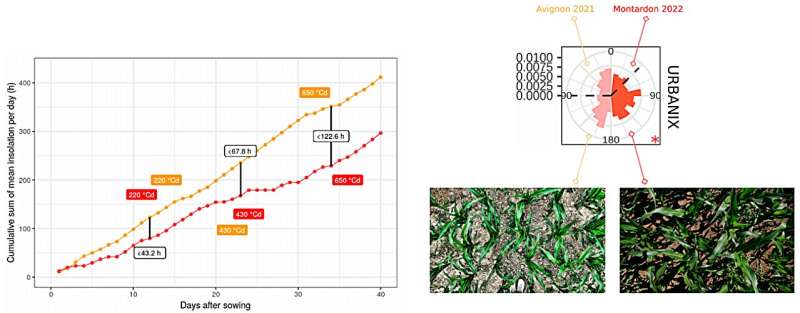New automatic algorithm unveils key insights into leaf orientation and plant productivity

Maize (Zea mays L.), the most globally produced cereal, owes its enhanced productivity to genetic, agronomic, and climatic factors, with cultivars adapted to higher density playing a crucial role. Recent research has focused on maize's architectural plasticity, particularly its ability to adapt leaf architecture to maximize light interception under varying densities. This adaptation includes leaf reorientation, a response to intraspecific competition, influenced by changes in red to far-red light ratios.
However, current studies are limited, often examining only one or two genotypes, and are constrained by time-intensive manual measurements. Recent advances in high-throughput phenotyping, using technologies like RGB cameras and LiDAR, have facilitated more efficient data collection. Despite these advancements, a significant gap persists in the development of automatic, field-based methods for tracking maize leaf orientation—an essential aspect for comprehending genotype-to-environment interactions and optimizing yield under high-density conditions.
In May 2023, Plant Phenomics a research article titled "Analyzing Changes in Maize Leaves Orientation due to GxExM Using an Automatic Method from RGB Images."
In this study, an automatic algorithm (Automatic Leaf Azimuth Estimation from Midrib detection [ALAEM]) was developed to describe maize leaves orientation in field conditions using vertical RGB images. The algorithm was validated against manual ground measurements and applied to a panel of five maize cultivars sown at different densities and row spacings across two sites in southern France. This work aimed to assess genotypic and environmental influences on leaf orientation and cultivars' plasticity in adapting their leaf orientation.
The validation results showed that ALAEM's estimates of leaf orientation aligned more closely with manual measurements as the maize plants developed. Early stages showed low correlation (R2 = 0.014 at 220 °Cd and R2 = 0.125 at 430 °Cd), but at 650 °Cd, a significant correlation (R2 = 0.36) was observed. The algorithm captured most variability across treatments, genotypes, and sites, with a satisfactory RMSE of 10% deviation.
However, ALAEM's effectiveness varied by site and development stage, influenced by factors such as plot heterogeneity and leaf visibility. ALAEM revealed distinct patterns in leaf orientation across different genotypes and sowing patterns. At 650 °Cd, a clear preferential orientation of leaves was noted, especially in high-rectangularity sowing patterns. This orientation varied between sites and was influenced by factors like sunlight conditions and intraspecific competition. The algorithm showed that some hybrids had more pronounced leaf reorientation in response to high-rectangularity sowing, indicating higher plasticity.
Despite its effectiveness, ALAEM has limitations. It relies on vertical RGB images and cannot provide per-leaf-rank azimuths. The algorithm primarily detects upper canopy leaves, with lower-rank leaves often obscured. Illumination conditions during image capture also affect midrib detection accuracy.
Overall, the study highlighted the impact of intraspecific competition and environmental conditions on maize leaf orientation. It identified significant differences among hybrids in leaf reorientation ability under varying sowing patterns, providing insights into their architectural plasticity. This underscores the utility of ALAEM in large-scale phenotyping experiments and advances understanding of maize leaf orientation dynamics in field conditions.
More information: Mario Serouart et al, Analyzing Changes in Maize Leaves Orientation due to GxExM Using an Automatic Method from RGB Images, Plant Phenomics (2023).
Provided by NanJing Agricultural University




















